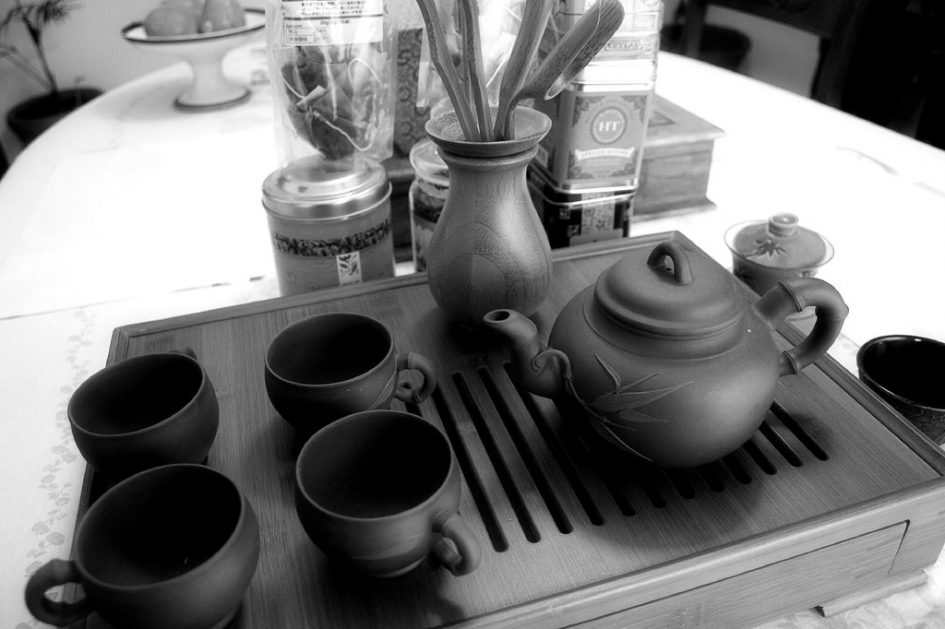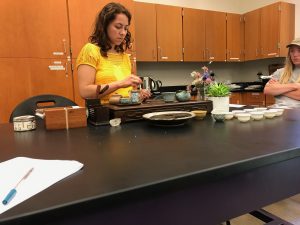This week’s tasting lab included several exciting elements! We got to try mead made by Brittany Payne and learn about the process, we enjoyed a Gong fu Cha style tea tasting of Jasmine white tea with Kotomi, and a meal prepared by Sean and Alana, including an interesting yogurt tasting.
I haven’t had mead in years, so it was exciting to re-acquaint myself with the flavors of it and to enjoy it more deeply through learning what goes into its making. First, we tasted honey water, the first stage of the mead. I noticed notes of clover and hay, and a bit of blackberry. Next, we tasted immature mead, from which I got white grape, apricot, mango, rose, and a bit of brown sugar. Then, we tried a short mead, which was carbonated and had a biscuit-like flavor, similar to baked bread. I also tasted praline, orange blossom, and cheese. Finally, we tasted a commercial mead, which I did not like at all. It tasted very animal, almost like manure. I couldn’t find much complexity in the flavor because I was overwhelmed by its foulness.
For lunch, I brought brown bread and butter, which went well with the mead. We also ate an asparagus stir-fry, refried beans, and rice. For a special tasting, Sean had us listen to a piece of music with our eyes closed, and came around the table with Alana to grate cinnamon over plain yogurt, which was meant to be eaten with an apple. It was interesting what stood out in the flavors when you were paying more attention to what you heard and smelled, rather than focusing solely on taste. The cinnamon was incredibly sweet, and the crunch of the apple felt like a shock to the system.
We also enjoyed a Gong fu Cha ceremony with jasmine silver needle tea, performed by Kotomi. I love jasmine tea, and it’s perfect for such a hot day. She told us a lot about the process. For example, in a Gong fu Cha ceremony, tea is poured first into a smelling cup, then from that cup to the drinking cup, and you are meant to smell from the smelling cup and then drink. Apparently, volatile compounds cling to the edges of the smaller, narrower smelling cup, which triggers a retronasal response. We learned more about other tea ware involved in the ceremony. For example, the gaiwan is generally used for teas that won’t season a clay pot. A clay pot will be used for teas like oolong, pu-er, and black teas, which imbue the porous clay with flavor much like a cast iron pot. You only use one type of tea for each clay pot to develop a pure flavor.


Leave a Reply